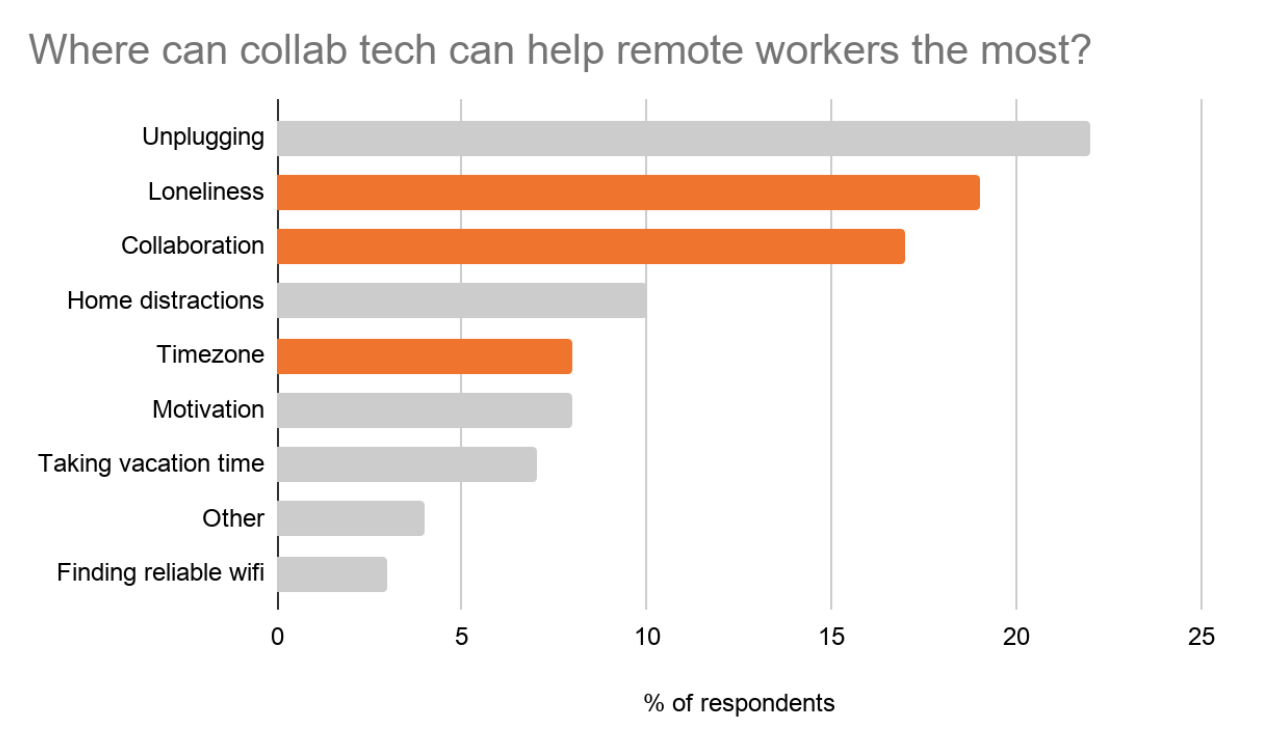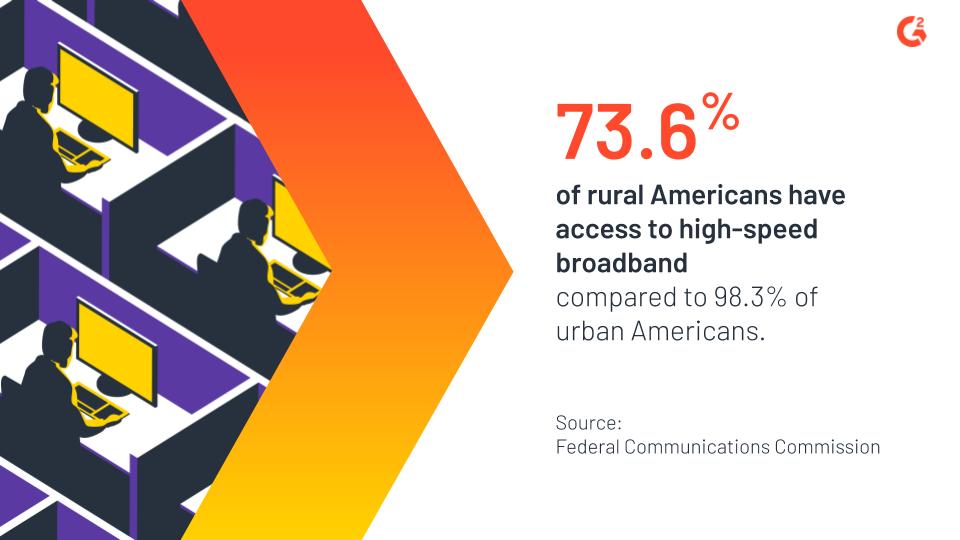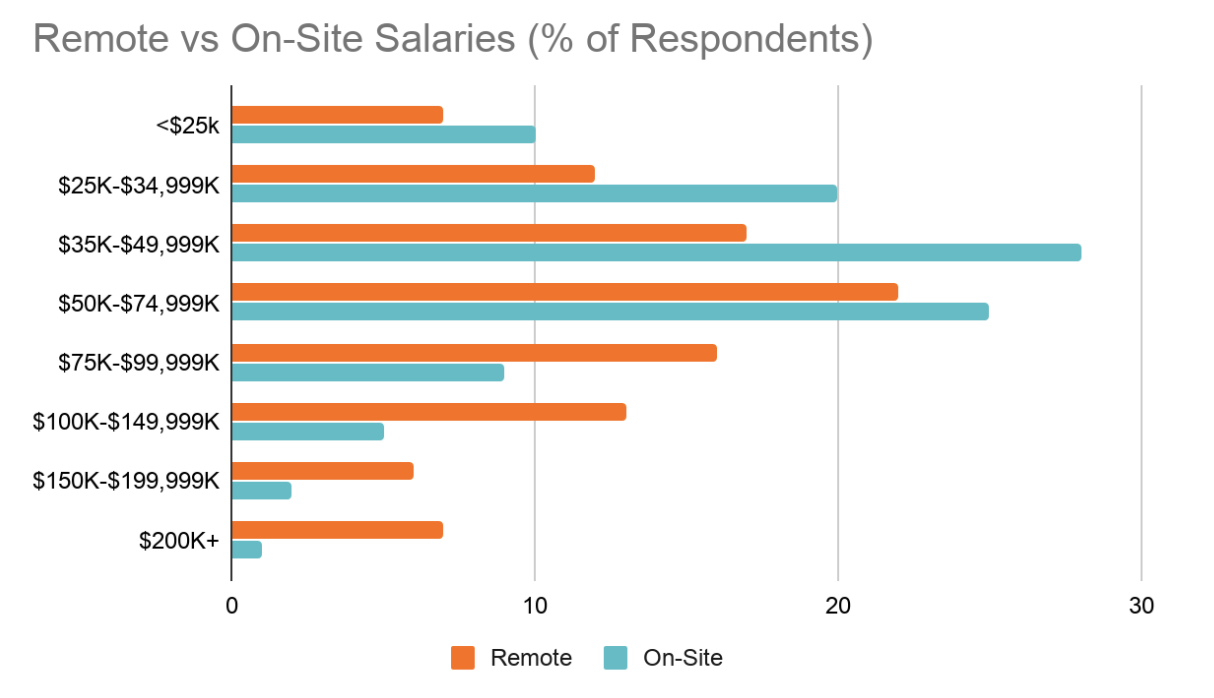Collaboration software was already a hot topic, then the COVID-19 outbreak happened.
Workforces across the globe are adjusting to the new remote work reality we live in. Many companies are scrambling to fill gaps in their collaboration and communication software stack, finally realizing how necessary these tools are in modern business.
It certainly feels like working from home would be impossible without mainstay video conferencing, cloud content collaboration, or business instant messaging solutions. That’s not an unfair feeling, either. Companies that rely on cloud software are having an easier time implementing work from home policies, an impossible feat for those relying on on-premises solutions locked to their physical office. This allows them to continue doing business without showing up to the office and protect the well-being of their employees and communities.
But the modern necessity of software in business comes with dire implications for America’s poorest.
How necessary is collaboration software for remote work?
Collaboration software has become the backbone of businesses across the globe as hundreds of thousands of workers move to remote work to prevent the spread of COVID-19. Remote work was on the rise even before the recent quarantine-related uptick; as of 2019, the number of remote workers has increased 150% since 2005.
Work from home policies and fully remote positions are only possible because of innovation in collaboration and communication software over the last 15 years. Improvements in video conferencing and VoIP solutions and the popularization of collaboration tools like business instant messaging have made it easier than ever to keep organizations connected, in the office or remotely.
G2 recently ran a survey of remote workers, and we found that collaboration tech usage substantially increased in response to the COVID-19 outbreak. 65.8% of our respondents reported increasing their usage of video conferencing tools, and 60.5% reported increasing real-time collaboration via instant messaging.
Collaboration tech is also equipped to address a few of the most prevalent pain points for remote employees. In a survey of remote workers by Buffer from 2019, 19% of respondents cited loneliness and 17% cited collaboration and/or communication as their biggest struggles associated with working from home. The foundational goal of collaboration technology is to connect teams from wherever they might be, even overcoming issues like time zone differences.
 Source: Buffer
Source: Buffer
There is one catch: The nature of these tools requires a decent internet connection.
In G2’s remote work survey, we asked respondents about issues with their technology while working remotely. The most cited problem was unstable or slow internet connectivity (42% of respondents) followed by slow application speeds (39%).
Many collaboration tools rely on working in real time, whether through a video feed or a simultaneous virtual whiteboard. Without high-speed internet, a video feed can freeze or skip around and updates to a whiteboard will be made intermittently instead of immediately. There are plenty of reasons for productivity loss, but collaboration tool failure is particularly significant in the context of remote work.
Real-time collaboration tools are only as good as the quality of your internet connection.
Disparities in access to high-speed broadband in the United States
For many living in the United States, internet speed isn’t a major concern. According to the Federal Communications Commission's 2019 Broadband Deployment Report, an average of 93.5% American households have access to high-speed broadband. However, that average doesn’t paint the most accurate picture of high-speed internet access clearly evidenced when looking at disparities between urban and rural populations.
Note: High-speed broadband is defined as wired internet capable of at least 25 Mbsp download and 3 Mbsp upload speed. This standard is based on the FCC’s and developers’ assessment of the bare minimum required to run most applications.
It’s also important to note that we’re measuring access to high-speed broadband, as opposed to adoption. In this context, “having access” means the infrastructure to provide high-speed broadband is available to those living in a given area. Conversely, “adoption” refers to consumer choice to purchase high-speed broadband that is available in their area. For example, someone is considered to have access to broadband if a Comcast, AT&T, etc. plan is available in their area, even if they aren’t purchasing it themselves.

While 98.3% of those living in urban areas have access to high-speed broadband, only 73.6% of rural households can say the same. That number is also inflated by a few outliers, and rural high-speed internet access can look much bleaker when looking at individual states. For example, in Arizona, 93.3% of city-dwellers have access to high-speed broadband, compared to 39.8% of those in rural areas. The American Southwest region as a whole shows similar deep disparities between rural and urban internet access.
There is low incentive for large internet providers like AT&T, Comcast, Time Warner, and Charter Communications to create the infrastructure necessary to provide high-speed broadband to low-income areas; providers assume they won’t see a return on their investment. At the same time, these companies have heavily lobbied against municipalities setting up their own broadband networks to fill the gaps they leave. As of 2019, 25 states have outlawed municipal broadband altogether.
Disparity in rural and urban internet access is a part of a larger pattern of inequality in high-speed internet access between the rich and poor.
According to the Pew Research Center, 44% of adults living in households making $30,000 or less yearly do not have access to broadband internet and approximately 17% only have internet access through a smartphone. Even in urban areas with increased access to high-speed broadband, low-income households are still three times more likely to lack access when compared to their wealthier counterparts in the same area.
Want to learn more about Collaboration & Productivity Software? Explore Collaboration & Productivity products.
Why is this important?
Remote jobs are coveted for the flexibility and competitive salaries they can offer. One survey by OwlLabs found that remote workers were 2.2 times more likely to make over $100,000 compared to office-bound peers. Both Buffer’s and OwlLabs’ surveys found that the overwhelming majority of workers, remote or on-site, want to work remotely for myriad reasons, spanning mental health, productivity, and general happiness.
 Source: OwlLabs
Source: OwlLabs
The COVID-19 outbreak has also shown the global workforce that jobs that can be done entirely remote are more resilient to global crises. Fully remote workers or those with jobs that can be done from home aren’t dealing with the widespread income insecurity dealt to those with on-site jobs in what lawmakers have decided are non-critical sectors.
At the same time, these jobs are much harder to snag by the poorest Americans who don’t have access to the internet speeds required to do them or the income to move to an area with better broadband access. This potentially impacts rural populations to an even greater degree, since they’re deterred and potentially prohibited from working high-paying jobs at technology-focused companies because they are both physically far and inaccessible via the internet.
Internet as a necessity
Some of us get to have conversations about which collaboration solutions are best or fun Zoom faux pas because of the privilege our jobs give us: a steady income that enables access to solid broadband internet and the ability to keep working through a global pandemic without exposing ourselves.
The most affected by COVID-19’s economic reverberations are those without the option to work remotely, including those who have lost their jobs and others working on the frontlines of the crisis.
In conclusion, yes, collaboration and productivity software and tools in general are entirely necessary for remote work. Collaboration tools aren’t the only software solutions necessary for remote jobs, but they are at the forefront of communication strategies for both general and crisis-based work from home policies. This necessity unfortunately enforces divides in what kinds of jobs people can hold based on their class and opportunities presented to them.
We’ve seen class inequality arise as a point of contention at multiple points during this crisis already; who can receive health care and coronavirus testing, who keeps their jobs, who has to put themselves in danger to keep earning a living.
The necessity of collaboration software and internet access is simply another example.

Jazmine Betz
Jazmine is a former senior market research analyst at G2. In her free time, she's playing video games or watching Lord of the Rings for the hundredth time.
